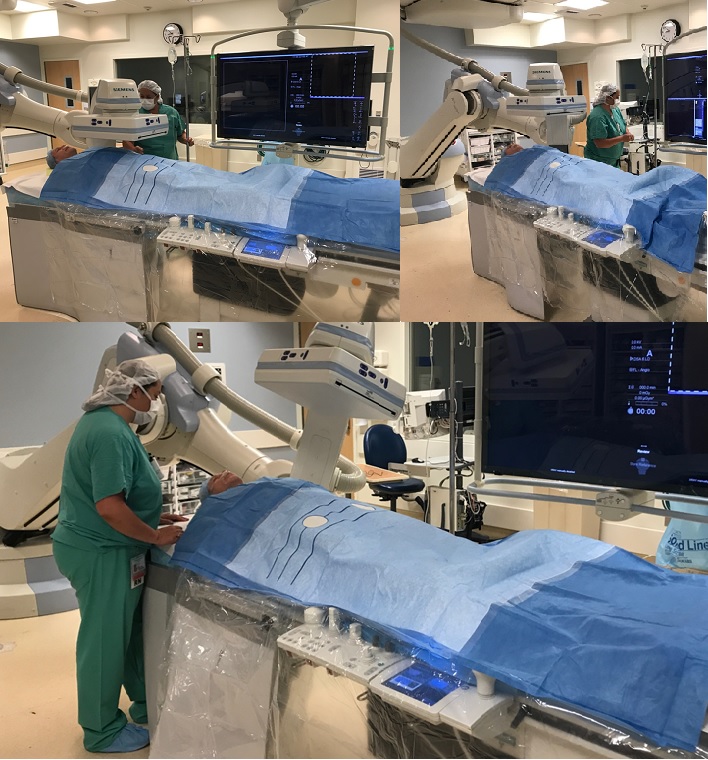Scheduling your Appointment
If you are taking blood thinners and NSAIDS
Your comfort and Safety is our priority
Your safety, health and comfort is our priority. We would like you to know that:
- Fluoroscopy is not painful. The Radiologist will make every effort to ensure you are as comfortable as possible during the procedure. Talk to your doctor about local anesthesia, conscious sedation, and general anesthesia as options for your particular exam.
- The Radiologist will make every effort to utilize the lowest amount of radiation necessary to safely complete the procedure.
Before your Interventional Radiology Procedure
- You will be asked to remove any clothing or jewelry that may interfere with the exposure of the body part being examined.
- You will also be required to change into a patient gown and shorts. All necessary items will be provided.
During your Interventional Radiology Procedure
- You will be positioned on the examination table and cleaned with an aseptic solution. Depending on the type of procedure, you may be asked to hold your breath for brief periods of time while the fluoroscopy is being performed. Motion interferes with obtaining good X-ray images.
- Contrast dye may be injected into the IV line in order to better visualize the organs or structures being studied depending on the type of procedure.
- For procedures that require catheter insertion into any body part, an additional line insertion site may be used in the groin, wrist, or other site.
- An X-ray machine will be used to produce the fluoroscopic images during the procedure.
- After the procedure has been completed, all catheters and IV lines will be removed.

Interventional Radiology Procedure
After your Interventional Radiology Procedure
Depending on what time of procedure you are having performed, the care required afterwards may vary. For some procedures, patients are required to recover for several hours with their leg immobilized after the catheter is removed. Other procedures have a shorter recovery period.
The type of care required after the procedure will depend on the type of fluoroscopy that is performed. Certain procedures will likely require a recovery period of several hours with immobilization of the leg or arm where the catheter was inserted. Other procedures may require less time for recovery.
If you experience any pain, redness, or swelling at the insertion site after your procedure, please notify your doctor immediately.
Your doctor will give you additional detailed instructions related to your care after the procedure.

Interventional Radiology Recovery Room
How long will my procedure take?
Procedure times vary greatly in Interventional Radiology. A simple G-tube change with no sedation is about five minutes. A cerebral angiogram with aneurysm coiling can take over four hours.
Click here for detailed information about your procedure.
Can I bring my belongings with me into the procedure room?
We ask that you leave nonessential valuables at home. Once you arrive to the pre-procedure area you will most likely be asked to change into a patient gown. Your clothes and shoes will be placed in a patient belongings bag which you will take into the procedure room.
Who will perform my procedure in interventional radiology?
Most procedures in IR require three healthcare professionals: An Interventional Radiologist (MD), a Radiology Nurse, and an X-ray Technologist. Of course depending on your procedure you could have more or less people caring for you.
Can I eat or drink prior to my IR procedure?
The short answer is no, but all patients will receive instruction from a Radiology Nurse one to two days before their procedure to explain medication and food restrictions.
Will my procedure be uncomfortable?
During your procedure you will be made as comfortable as possible. Positioning sponges, warm blankets, local anesthesia and conscious sedation are all available depending on your procedure.

